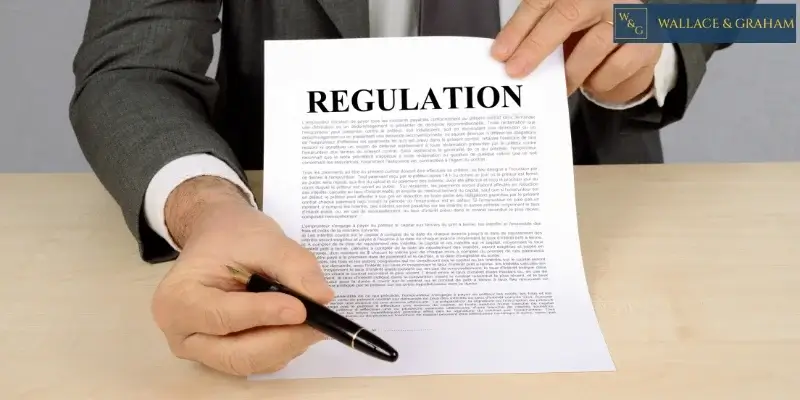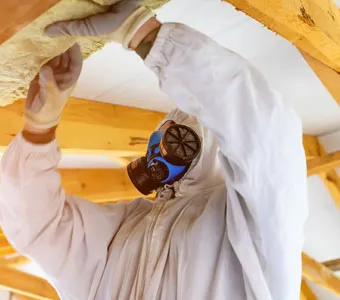How Do New Silicosis Regulations Affect Stone Workers in the Southeast?
Recently, the Occupational Health and Safety Administration (OSHA) implemented new rules designed to reduce the risk of silicosis for American workers in many industries. It’s vital for everyone at risk to know how new silicosis regulations affect stone workers in the Southeast. Stonework industry employees face some of the highest risks of silica dust exposure, so they need to know when employers fail to meet new applicable regulations.

How New Silicosis Regulations Affect Stone Workers in the Southeast
Every employer in every industry has a responsibility to ensure their workplace is as safe as possible for employees. In certain industries, it means taking specific measures to address obvious and prevalent safety risks, such as silica dust exposure for those who work in mining, construction, and any type of stonework. When employers fail to meet these regulations, they put their employees at risk and face potential liability for workers’ silicosis claims.
The recent changes from OSHA reduce the permissible exposure level for crystalline silica in general industry and construction. Employers must take steps to meet these permissible exposure level requirements; otherwise, they could face liability for any workers’ silicosis diagnoses. Often called the king of occupational diseases, studies estimate anywhere between 2,500 and 5,000 new cases of silicosis throughout the United States each year.
The American Lung Association reports that about 2.3 million US workers are exposed to silica dust at work each year. The vast majority of these workers, nearly 2 million of them, work in the construction industry, while the other 300,000 cases arise from other industries. All employers must follow new engineered stone silica rules and the worker safety laws set forth by OSHA, otherwise, they face severe legal repercussions.
Finding Legal Help for Silicosis in the Southeast
The new regulations for silica dust in the workplace effectively reduce the permissible exposure level by 50%, prompting employers in the natural stone industries to take concentrated steps to meet these requirements and ensure their workers’ safety. Breathing zone sampling, specific training programs, and the use of specific safety equipment may be necessary for your workplace. Employers should keep records of all training and compliance measures taken.
If you have been diagnosed with silicosis at work, you may be eligible to file a workers’ compensation claim, and success with the claim could yield significant benefits. However, you may also have grounds for additional legal recourse, such as a civil suit against your employer. If they did not meet the new standards for silica dust exposure, they not only face liability for your damages but also additional legal repercussions.
Silicosis can not only require extensive medical treatment but also prevent the victim from continuing to work in their field. They could struggle with severe medical complications and qualify for disability, but even if they can still work, they will not be able to continue working in a place that poses a risk of further silica dust exposure.
You may be entitled to substantial compensation, and the right attorney can guide you through your legal proceedings. The attorneys at Wallace & Graham have the experience necessary to determine whether your employer is noncompliant and can explain how new silicosis regulations affect stone workers in the Southeast. Contact our firm today if you have questions about your recent silicosis diagnosis.
FAQs
Q: Which Workers Are at the Highest Risk for Exposure to Silica Dust?
A: Based on available data, workers in the construction industry are at the highest risk for exposure to silica dust. The materials used in all types of construction can potentially release silica dust particles into the air, and silicosis can develop rapidly with repeated high levels of exposure. Employers must take steps to reduce silica dust exposure, which usually entails specialized equipment and protective gear.
Q: How Long Does It Take for Silicosis to Develop?
A: The time it takes for silicosis to develop varies based on the intensity and frequency of exposure. It is common for silicosis symptoms to appear many years following exposure. This can sometimes make it difficult for a victim of this condition to accurately determine when and where they were exposed. If you are unsure when you were exposed to silica dust, it’s important to consult an experienced silicosis lawyer right away.
Q: Can You Sue for Silica Dust Exposure?
A: Yes, you could have grounds to sue for silica dust exposure. If your employer did not follow applicable OSHA regulations for permissible exposure levels of silica dust at work and you were diagnosed with silicosis, they could be held liable for your condition. You may also be able to file a workers’ compensation claim, and many of these cases are challenging. Consult an attorney after diagnosis to determine your most viable legal options.
Q: What Are the First Symptoms of Silicosis?
A: The first symptoms of silicosis usually include shortness of breath, a persistent cough, and difficulty breathing. Without effective treatment, these symptoms will worsen, and new symptoms such as weakness, fatigue, night sweats, and leg swelling may appear. Unfortunately, silicosis is not a curable condition. Once someone has been diagnosed with silicosis, their only option will be to manage their symptoms with ongoing medication and other care.
Q: Should I Hire a Lawyer After a Silicosis Diagnosis?
A: It’s a good idea to hire a lawyer after a silicosis diagnosis. You may have more legal options than you initially expected, and you may also be eligible to claim substantial compensation. An experienced attorney can guide you through the workers’ compensation claim process and build a civil suit if necessary. You’re more likely to succeed with your legal efforts and maximize your compensation with experienced legal counsel on your side.
The attorneys at Wallace & Graham have years of experience helping our clients with challenging silicosis cases throughout the Southeast. If you believe an employer has failed to adhere to the new silicosis regulations and you have suffered as a result, we can help you hold them accountable. Contact us today and schedule a free consultation with our team to learn more about your legal options and how we can help with your case.






